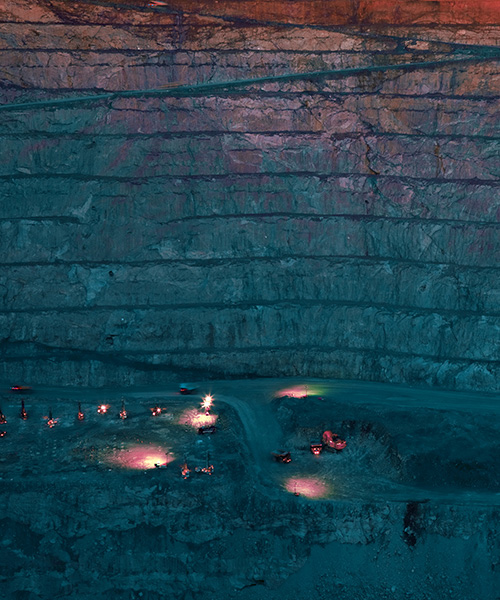November 07, 2025 • 6 min read
Harnessing AI to build trusted knowledge bases for industrial decarbonization projects
This article draws on insights from Mission Innovation’s Net‑Zero Industries Whitepaper Series: ‘The Application of AI to Improve Technology Demonstration Databases’, written by Dr Mathew McGann and Dr Alan Monaghan.
Key takeaways
- AI can transform static data into actionable knowledge. When designed with human intent and expert oversight, AI systems can turn fragmented technology data into trusted, contextualized insights.
- Human guidance remains essential. AI is not a replacement for expertise – it amplifies it. Human-defined data models, version control, and source verification ensure quality and trust.
- Structured knowledge accelerates decarbonization. AI‑driven knowledge bases help industrial operators share verified information faster, improving investment confidence and technology adoption rates.
- Global collaboration is key to scale. A shared AI-powered knowledge infrastructure can align governments, investors, and industries – helping accelerate collective progress toward net‑zero goals.
Mission Innovation’s Net-Zero Industries was created to unite key stakeholders and help heavy‑emitting sectors accelerate the adoption of decarbonization technologies.
Energy-intensive industries account for around 25 percent of global greenhouse gas emissions. Over the next decade, research, development and demonstration (RD&D) will be critical to advancing technologies that can deliver deep emissions reductions beyond 2030.
To encourage technology adoption, many organizations maintain a technology demonstration database to collect and develop information about emerging decarbonization technologies being tested or deployed in industrial settings. But how effective are these databases and can artificial intelligence (AI) improve a static database and transform it into a living and curated knowledge base?
“Through Mission Innovation, we recently partnered with four international knowledge partners, using AI to assess the current state of demonstration project data-sharing and explore how AI could unlock their full potential by turning raw facts and figures into actionable knowledge,” states Dr Alan Monaghan, Senior Vice President Technology and Expert Solutions.
Human-guided intelligence: Designing trustworthy AI
Notably, Monaghan refers to knowledge bases as ‘specialist AI systems’, emphasizing that despite growing popularity, the capabilities of mainstream AI (especially large language models) are often overestimated.
“AI is seen by many as a silver bullet for data challenges,” says Monaghan, “but we cannot blindly trust its outputs, when systems like ChatGPT may generate confident sounding but inaccurate outputs.”
This highlights the need for AI to be designed with human intent and oversight from the outset. “From defining what information to extract, to structuring the data and resolving conflicts,” he continues, “AI must be guided by subject‑matter expertise. This safeguards against automated assumptions and maintains data quality through traceable logic, version control and source verification.”
This is especially critical when dealing with engineering and project data in industrial decarbonization, where decisions must be grounded in verified facts about technology readiness, deployment status and commercial viability.
“Decarbonizing major industries like steel, cement, metals and chemicals will take decades and involve transforming hundreds of facilities,” says Monaghan. “To speed up progress, it’s crucial that high-quality information about technologies is shared quickly and clearly, so others can learn, build trust and adopt faster.”
“AI can become a powerful engine to augment human expertise,” says Monaghan. “By defining clear questions relevant to the expertise we want to simulate and designing a corresponding data model that mimics human intelligence, we can influence AI output to be more meaningful, context-aware and reliable.”
This starts with the right questions and human-guided architecture
A key design principle in building an intelligent system is to incorporate the questions stakeholders need answered. For decarbonization technologies, these range from high‑level investment prioritization to fine-grained technical deployment barriers. To train an AI, these questions are used to define the fields and topics of intelligence we need the AI to emulate.
“We prioritize gathering intelligent questions from our customers and stakeholders who need the AI-generated knowledge,” says Monaghan. “These questions form the blueprint for categorizing and storing data points with an associated contextual awareness, strengthening AI responses to be not only factually accurate but also relevant and actionable.”
This human-guided data architecture empowers AI to ask the right questions. The answers are then linked to ‘Living Data FieldsTM’, dynamic structures invented by Horiz-in, a public data insights firm, that act as evolving knowledge containers. This allows contextualized knowledge storage, but also an adaptability to evolve what we need our AI to learn and hold knowledge on, such as technology demonstrations, funding allocations and operational strategies.
An example is the field of investability. “Instead of leaving AI to guess the meaning, we clearly define what to look for, both in terms of the intent and how the information will be used,” explains Monaghan.
For investability, a key question was: “How confident are we in the investability of these technologies?” This question was focused on finding feasible investments, using content related to financial analysis and viability. Horiz-in designed these tools as 'living', to evolve over time, allowing both the question and the content it gathers to be refined as technologies evolve and are deployed. This improves the quality of insights captured and allows for expansion in the knowledge the AI can provide.
Knowledge base systems to deliver direct value to engineering projects
For the engineering industry managing complex industrial decarbonization projects, an AI‑driven knowledge base is more than just a data tool.
“It is a strategic enabler that consolidates and curates fragmented data, surfacing high‑quality, cross‑verified intelligence that can inform design choices, risk mitigation and investment strategies,” adds Monaghan.
“In the Mission Innovation study, our objective was to explore how AI can help improve global efforts to share knowledge on the approval, investment, adoption and performance of industrial decarbonization technologies,” explained Monaghan. “We focused on drawing from and optimizing data within existing knowledge databases and supplemented it with relevant and verified public domain knowledge.”
AI powered processes provided by Horiz-in, called ‘Knowledge BringersTM’ scanned partner databases and public sources such as press releases, research databases and patent filings for information against each Living Data Field. These tools extracted relevant facts and merged them into unified entries of the data model.
“The result was not just data collection, but contextualized knowledge that can support the engineering and investment decisions required by key stakeholders, while being referenced and transparent,” adds Monaghan.
For industrial operators, the practical benefits of an AI-driven knowledge base are tangible and immediate:
- Resolving fragmented and inconsistent project data: Technology projects often appear across multiple sources and are reported at varying stages of their development. Knowledge bases use fuzzy logic matching and cross-referencing to merge disparate data sources, creating coherent, unified profiles. This reduces redundant effort and improves data completeness, key for accurate project oversight.
- Enhancing technical knowledge fields: Engineering decisions rely on detailed, context-rich information about technology capabilities, readiness levels and integration methods. An AI system can enrich sparse data with verified public domain information and trusted partner inputs, providing engineers with deeper insights into how technologies function and scale, prioritized on the questions and information of greatest value to their needs.
“For example, within the Mission Innovation study, technology demonstration project data was enhanced from summary level descriptions across the partner databases, to a rich description of the technology across multiple information fields. This enhancement from extensive and verifiable public domain information can better inform stakeholders on a technology solution,” says Monaghan.
- Assessing commercial and technical viability: Engineering teams also need to understand economic implications. By synthesizing investment data, production volumes and carbon abatement metrics, an AI system can generate nuanced profitability assessments. For example, in a Steelanol project assessment, three partner demonstration databases each held partial information. When merged using AI and further enriched with public‑domain content, the knowledge base revealed that the project had a viable business model and achieved a negative CO2 abatement cost, a key indicator of profitability. This additional clarity helped bridge gaps between data from the engineering design and financial modelling and investor confidence.
- Creating a living knowledge base: The AI solution is designed as a dynamic repository that continuously updates as new project data and public information become available, or as stakeholder knowledge needs evolve. This supports long‑term engineering project management, enabling teams to track progress, flag emerging risks and respond quickly to technology advancements and market conditions.
A step towards global decarbonization knowledge infrastructure
The Mission Innovation study revealed both the complementary strengths of various existing technology demonstration databases and a clear opportunity to enhance them. By improving the quality, quantity and consistency of content across trusted sources, and by enriching it with verified public-domain data, these systems can become far more than passive repositories of data.
This work demonstrates that AI‑powered knowledge bases can transform fragmented and inconsistent information into structured, stakeholder-relevant insights that accelerate the deployment of technologies. By combining carefully structured data models with intelligent contextualization and ongoing expert oversight, we can build dynamic, evolving repositories of high-quality, cross-verified knowledge.
“When looking for solutions, we must also respect the essential role of human expertise throughout,” says Monaghan. “AI‑human systems do not replace domain expertise, they amplify it. AI enhances, but never substitutes, the expert interpretation and decision-making that define engineering excellence. Together, these systems create a scalable, reliable platform for industry, investors and governments to manage innovation at scale, reduce duplication, and accelerate progress toward national and global net‑zero goals.”
Looking ahead, the potential of AI knowledge bases extends beyond individual projects or companies.
“My vision is a shared global resource that serves all key stakeholders, including policymakers, industry operators, financiers and the public. This will enable transparent, real‑time visibility into industrial decarbonization progress worldwide,” concludes Monaghan. “This AI curated knowledge base would support better alignment of strategies, minimize duplication of effort and accelerate technology deployment on a global scale.
Access to the original whitepaper can be found here.





